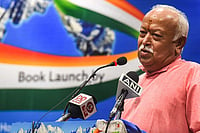You might have heard: an east Delhi hall was gutted last week, killing 14 eunuchs and leaving 40 injured. It was a private community congregation: in cruel irony, a day of prayer for their forebears. It took a tragedy to renew focus on the secluded life led by India’s third sex, of whom there are an estimated 0.5 to one million. Kinnars or hijras, the popular terms for eunuchs, have been mythologised as servants and confidantes in royal courts. Today, they are known for performances at weddings, house-warmings and birth ceremonies, and begging or hustling for money, with the claps (and often sexually laced talk) being defiant trademarks.
But there is another, more positive, side to the story. There have been attempts to recognise their rights and grant them a formal identity. The 2011 Census made accommodation for them. In 2009, the Election Commission classified the third sex as “others” on voter identity cards. In 2005, Indian passport application forms were updated with three gender options: M, F, and E (for male, female, and eunuch, respectively).
Such measures have helped them assert themselves. Outlook met a few who have tried to assimilate and lead normal lives despite being perceived as “anomalous”. They have gone beyond the naach-gaana to weave themselves into the social fabric. But, it is not easy to break away entirely. Most live together, for security, strength and solace, but simultaneously seek social integration—with many focusing on social work and community development. As 55-year-old Parveen, a eunuch politician and social worker from Jalandhar, says, “We may be different physically, but our hearts are the same.”
Photographs by Tribhuvan Tiwari, Text by Namrata Joshi


























